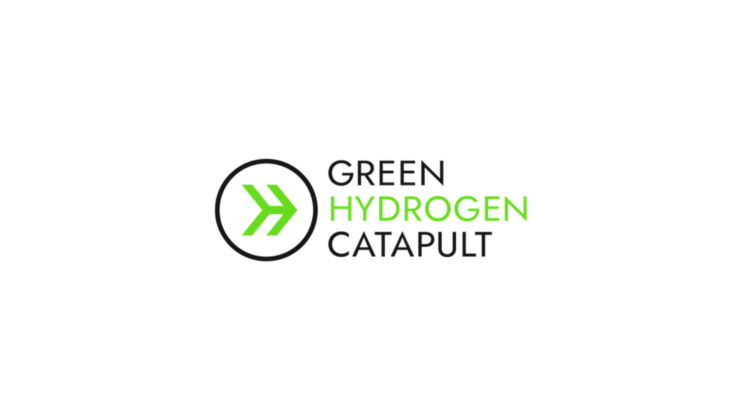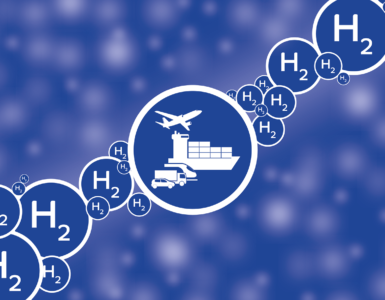Strong, well-calibrated US guidance on IRA 45V implementation will steer international clean hydrogen standards in the right direction toward climate alignment.
Dear Assistant Secretary Batchelder, Mr. Hanlon, Mr. Paul, Mr. Podesta, Mr. Zaidi, and Secretary Granholm:
The members of the Green Hydrogen Catapult (GHC) write to express strong support for climate-aligned implementation of the 45V clean hydrogen production tax credit (PTC). Rules governing the allocation of 45V should ensure hydrogen defined as “clean” in the US is produced through processes that are truly clean, consistent with the rules adopted earlier this year by the European Commission.
US rules for defining green hydrogen will reverberate across global markets.
🔥 What about we co-host a webinar? Let's educate, captivate, and convert the hydrogen economy!
Hydrogen Central is the global go-to online magazine for the hydrogen economy, we can help you host impactful webinars that become a global reference on your topic and are an evergreen source of leads. Click here to request more details
The GHC is a private sector coalition, convened with the support of the UN High-Level Climate Champions and coordinated by RMI. It brings together the biggest green hydrogen project developers and value chain participants from all over the world to accelerate the emergence of a new green hydrogen economy and drive down the production cost of green hydrogen.
With GW-scale projects under development in the US and internationally, Catapult members are acutely aware that definitions for clean hydrogen set in the US will directly influence the definitions set by other governments – especially in countries determined to build up hydrogen trade, where the US is positioned to become a key player.
Harmonizing US rules with already-adopted EU standards will catalyze green hydrogen market growth and enable deep decarbonization, in the US and abroad.
It’s therefore critical for US definitions to promote practices that guarantee hydrogen produced with renewable power (especially with procured renewable power via grid-connected electrolyzers) is minimally carbon intensive.
By enacting the PTC, the US incentivized the rapid scaling of clean hydrogen, needed to enable decarbonization in heavy industry and transport. Support from 45V has prompted several suppliers to explore business cases for exporting products into Europe and other markets. Ultimately, the clean hydrogen PTC could enable the delivery of reliable, near zero-carbon hydrogen throughout international markets – but this will depend on the standards that define clean hydrogen in the US.
Setting standards where stricter requirements for grid-connected electrolyzer systems are implemented over time will allow first movers to scale projects with minimal initial bureaucratic burden, while guaranteeing that hydrogen produced with grid power in the US is truly “green,” derived from renewable instead of fossil electricity.
The EU’s Delegated Acts on Renewable Fuels of Non-biological Origin offer a strong example framework for phasing in strict standards, incentivizing first mover developers to move quickly to promote technology cost reduction across the hydrogen value chain. By roughly aligning its rules with the EU’s, the US could capitalize on opportunities to:
- Send a strong signal to other markets that strict standards are needed to promote climate alignment and truly achieve deep decarbonization through clean hydrogen deployment.
- Facilitate the export of green hydrogen-derived commodities into Europe, accelerating hydrogen market scale-up on both sides of the Atlantic and activating global hydrogen trade.
For clean hydrogen production in the US to generate real climate benefits, PTC rules must incorporate a new power requirement, a temporal matching requirement, and a deliverability requirement. To enable early project scale-up and cost decline, some flexibility can be built into these rules before stricter requirements are phased in over time.
Analysis from the Catapult’s co-convener RMI finds that three features are necessary to ensure grid-connected electrolysis is truly renewable and will contribute to US climate goals: 45V rules should include additionality, temporal matching, and deliverability requirements. In the short-term, flexibility can be built into tax credit implementation rules to enable market development.
Additionality
The US should immediately require green hydrogen production to be affiliated with new power production, with “new power” defined as electricity from a generator that starts power production less than 36 months prior to hydrogen production. This would align with the EU’s Clean Hydrogen Standard.2
Flexibility should be granted to existing zero-carbon generators that meet certain conditions to re-qualify as “new.” I.e., plants that repower to significantly upgrade their full generator capacity, plants that pursue uprating, or plants that leverage waste heat efficiency, as well as plants that are threatened with retirement or located in regions with low locational marginal prices (LMP), could be exempted from the 36-month vintage requirement.
Temporal Matching
The US should require monthly matching between renewable power production and grid-connected hydrogen production until 2030, when they should start requiring hourly matching regardless of operational start date.
Flexibility should be granted if procured clean energy is curtailed, allowing the project to use grid power without temporal matching of clean electricity. Projects should also be allowed to qualify for the credit on an hour-to-hour basis, as opposed to aggregating and averaging emissions intensity over many hours and determining compliance over that longer period of time (in line with the EU’s approach that allows hydrogen producers to “cherry pick” their hours of clean hydrogen production). But it’s crucial that initially looser standards phase out over time, so that procured renewable power can always be attributed to produced renewable hydrogen.
Deliverability
The US should require electrolyzers be in the same geographic region as the clean power they claim, as defined by the Department of Energy (DOE) National Transmission Needs Study.3
Once a generator is determined to be deliverable for a certain hydrogen producer, it should be assumed to meet deliverability requirements throughout the life of the credit. Flexibility should be granted to sophisticated projects seeking to purchase power or certificates from electricity producers in different geographic regions with equal or higher electricity prices than that of the electrolyzer’s geographic region.
Setting stricter, climate aligned rules for defining green hydrogen will position the US as a leader in the race to develop clean hydrogen markets, helping keep the world on track with net zero goals.
The PTC was enacted to kickstart the scale-up of a nascent clean fuel industry that will help the US – and potentially other international markets, given the US’s attractiveness as a hydrogen exporter – decarbonize. To ensure the US delivers on these aims, 45V rules must include additionality, temporal matching, and deliverability requirements, while allowing for early – but limited – flexibility so the US’s clean hydrogen industry can grow.
The core mission of the Green Hydrogen Catapult is to bring electrolytic hydrogen to scale, leveraging renewable electricity and delivering renewable fuels to heavy industry and transport sectors around the world. Green hydrogen will critically enable us to meet our climate targets, but only if it’s produced in a manner that truly reduces carbon emissions – especially in the US, where market regulations will have global implications.
The Catapult respectfully urges Treasury to set definitions for green hydrogen that guarantee products can be considered zero-carbon, setting an example for other regions keeping a close eye on the US’s deliberations. By including the features described in this letter, and by closely harmonizing standards with those passed by the European Commission, the US can re-affirm its commitment to green hydrogen market development and global decarbonization goals.
Yours sincerely,
Members of the Green Hydrogen Catapult
READ the latest news shaping the hydrogen market at Hydrogen Central
Strong, well-calibrated US guidance on IRA 45V implementation will steer international clean hydrogen standards in the right direction toward climate alignment. source








